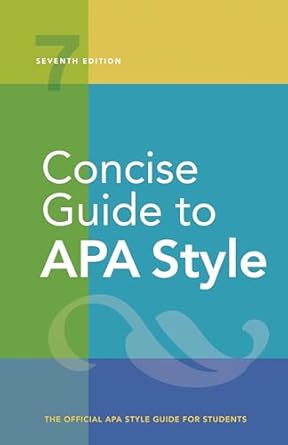[toc]
apa style dois and urls in references guide
Concise Guide to APA Style: 7th Edition (OFFICIAL)
Page 257 Review
Understanding DOIs and URLs in APA Style References
This ebook excerpt provides valuable guidelines on how to properly include Digital Object Identifiers (DOIs) and Uniform Resource Locators (URLs) in APA Style references.
Correctly formatting these elements is crucial for ensuring readers can easily locate and access the cited sources.
Let’s delve into the key points:
DOI Inclusion
The excerpt emphasizes the importance of including DOIs whenever available:
> “Include a DOI for all works that have a DOI, regardless of whether you used the online version or the print version.”
This means that if a work, whether accessed online or in print, possesses a DOI, it *must* be included in the reference.
The DOI acts as a persistent link, ensuring long-term access to the source, even if the URL changes.
Conversely:
> “If a print work does not have a DOI, do not include any DOI or URL in the reference.”
If the print version lacks a DOI, neither a DOI nor a URL is necessary.
Online Works: DOI vs.
URL
The excerpt clarifies the hierarchy between DOIs and URLs for online works:
> “If an online work has both a DOI and a URL, include only the DOI.”
Prioritize the DOI over the URL.
The DOI is the more stable and reliable identifier.
URLs for Online Works Without DOIs
When an online work lacks a DOI, the inclusion of a URL depends on the context:
> “If an online work has a URL but no DOI, include the URL in the reference as follows:”
For works from general websites:
> “For works without DOIs from websites (not including databases), provide a URL in the reference (as long as the URL will work for readers).”
Include the URL as long as it’s a stable and accessible link.
Handling Academic Research Databases
The guidelines for academic databases are more nuanced:
> “For works without DOIs from most academic research databases, do not include a URL or database information in the reference because these works are widely available (see Section 9.30).
The reference should be the same as the reference for a print version of the work.”
For widely accessible databases, such as those containing common journal articles, omit the URL and database information.
Treat the reference as if it were for a print version.
However, there are exceptions:
> “For works from databases that publish works of limited circulation (such as the ERIC database) or original, proprietary material available only in that database (such as the UpToDate database), include the name of the database or archive and the URL of the work (see Section 9.30).”
For databases with limited circulation or containing proprietary material, include the database name and URL.
> “If the URL requires a login or is session specific, meaning it will not resolve for readers, provide the URL of the database or archive home page or login page instead of the URL for the work.”
If the direct URL requires a login or is session-specific, provide the URL of the database’s homepage or login page instead.
Broken Links
What to do when a URL is no longer functional:
> “If the URL is no longer working or no longer provides readers access to the content you intend to cite, follow the guidance for works with no source (see Section 9.37).”
Refer to the guidelines for handling sources that are no longer accessible.
Other Identifiers
The excerpt clearly states which identifiers are *not* to be included:
> “Other alphanumeric identifiers such as the International Standard Book Number (ISBN) and the International Standard Serial Number (ISSN) are not included in APA Style references.”
ISBNs and ISSNs are excluded from APA Style references.
Formatting DOIs and URLs
The guidelines conclude with formatting instructions:
> “Present both DOIs and URLs as hyperlinks (i.e., beginning with “http://” or “https://”).”
DOIs and URLs should be presented as active hyperlinks.
> “Because a hyperlink leads readers directly to the content, it is not necessary to include the words “Retrieved from” or “Accessed from” before a DOI or URL.”
The phrases “Retrieved from” or “Accessed from” are unnecessary before DOIs and URLs because the hyperlink provides direct access.
Conclusion
By adhering to these guidelines, researchers and writers can ensure the accuracy and accessibility of their references, upholding the principles of APA Style.
Properly formatted DOIs and URLs contribute to the overall credibility and usability of academic work.
Buy full ebook for only $18: https://www.lulu.com/shop/american-psychological-association/concise-guide-to-apa-style-7th-edition-official/ebook/product-rmzpq54.html?page=1&pageSize=4
Apa Style Dois And Urls In References Guide
Read more: Statistical Symbols Explained: A Comprehensive Guide


Leave a Reply